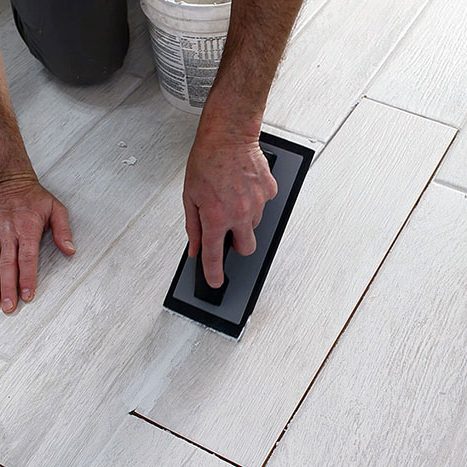Stone, marble, ceramic, porcelain – tiles are available in a vast array of materials known for both aesthetics and longevity. While tiles are a popular and durable choice for floors, bathrooms, and other wet areas, they’re not immune to damage over time. If you have noticed minor wear and tear or major cracks and chips, you might be wondering whether it’s best to repair them or look for replacement options.
Understanding the most common types of tile damage can help you identify issues early and take steps to prevent or repair them.
Cracking and Chipping – Tiles can crack or chip due to heavy impact, structural movement, or improper installation. Cracks and chips not only look unsightly but can also allow water to seep in and cause further damage.
Grout Deterioration – The grout between tiles plays a crucial role in keeping the tiles securely in place and preventing water intrusion. Over time, grout can become discoloured, cracked, or loose, requiring regrouting to maintain the integrity of the tile surface.
Staining and Discoloration – Certain liquids, chemicals, or even dirt and grime can cause tiles to become stained or discoloured. Proper sealing and regular cleaning can help prevent this type of tile damage.
Lippage – Lippage occurs when adjacent tiles are not level with each other, creating an uneven surface. This can happen due to improper installation or subfloor issues and can be a tripping hazard.
Tile Repair Techniques for Different Types of Damage
There are a variety of tile repair techniques that can be used to fix different types of damage.
Cracked Tiles
For tiles with small cracks, a tile repair epoxy or caulk can be an effective solution. These products fill in the crack and help prevent it from spreading. Be sure to thoroughly clean the area before applying the epoxy or caulk and follow the manufacturer’s instructions carefully.
Chipped Tiles
Chipped tiles can often be repaired using a tile repair compound. This putty-like material is applied to the chipped area, allowed to dry, and then sanded down to blend with the surrounding tile. For larger chips, it may be necessary to replace the entire tile.
Loose Tiles
If a tile has become loose, the subfloor underneath should be inspected for any damage. Once the subfloor is repaired, the tile can be re-adhered using a tile adhesive. Be sure to clean the back of the tile and the subfloor thoroughly before applying the adhesive.
Stained or Discoloured Tiles
A tile cleaner or polishing compound can often restore the original appearance. If the staining is more severe, it may be necessary to re-grout the tile or even replace the tile entirely.
Preparation – The Key to Success
Before beginning any tile repair project, it’s important to properly prepare the area. This will ensure a successful and long-lasting repair.
- Closely examine the tiles to determine the extent of the damage. Note if the issue is limited to the tile surface or if the substrate beneath also needs attention.
- Thoroughly clean the tile and grout in the repair area. Remove any dirt, debris, or old caulk that could interfere with the new materials adhering properly.
- Make sure the cleaned surface is completely dry before starting the repair process. Moisture can compromise the bond of new adhesive or grout.
Next, you’ll need the right materials for tile repairs, it will likely include replacement tiles that match the existing ones, tile adhesive, grout, and sealant. Selecting the appropriate products for your specific tile type and repair needs will ensure a seamless integration with the surrounding area. The right tools are equally important. These may include a tile cutter, grout float, tile trowel, and a wet saw for more complex cuts. Investing in quality tools will not only make the repair process easier but also help you achieve professional-grade results.
When to Replace Tiles Instead of Repairing?
If the tiles are severely cracked, chipped, or broken, it may be more cost-effective and practical to replace them rather than attempting a repair job. Extensive damage can compromise the structural integrity of the tiles and lead to further issues down the line.
If the tiles are no longer in line with your desired aesthetic or the current design trends, or you’re having trouble matching the existing tiles, replacing them may be the best option. Updating the tiles can significantly improve the overall look and feel of a space!
If the underlying subfloor or wall surface is uneven or unstable, it can cause the tiles to become loose, cracked, or unevenly spaced. In such cases, it’s often better to remove the old tiles and start fresh with a properly prepared surface.
If you’re unsure about repairing or replacing, or you lack the skills or confidence to DIY, it might be best to consult the professionals. Speak to the staff at your local tile shop, they will be able to help with expert advice or recommend trusted tilers. Rockingham is home to Ceramico – WA’s leading tile and bathroom centre. From small repairs to major renovations, we have the best tiles and bathroom fittings to suit your needs and budget. For tiles, trade supplies, toilets, tapware, and even shower screens installation, Rockingham’s Ceramico is here to help. Call our friendly staff today at 9556 4444, get a quote online, or visit our showroom today.
















